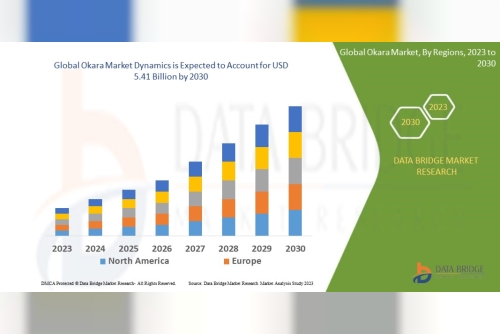The complexity of derivative pricing has long posed a significant challenge for finance professionals. Traditional models such as the Black-Scholes equation have served as cornerstones for pricing options and other derivatives. However, the emergence of machine learning (ML) has revolutionised the financial landscape, offering more flexible, accurate, and efficient methods for pricing these complex financial instruments. In this blog, we will explore machine learning models used in derivative pricing, delve into practical applications, and examine case studies that highlight their effectiveness.
Introduction to Derivative Pricing and Machine Learning
Derivative pricing refers to the determination of the fair value of financial instruments such as options, futures, and swaps, whose value is derived from underlying assets like stocks, interest rates, or commodities. Accurate pricing is essential for managing risks, maximising returns, and ensuring market stability.
Traditional pricing models rely on assumptions that may not fully capture the dynamics of financial markets. Machine learning, with its ability to analyse large datasets and uncover hidden patterns, has shown immense promise in enhancing derivative pricing. By leveraging supervised learning, deep learning, and reinforcement learning techniques, machine learning models can provide more accurate pricing predictions while accounting for non-linearity, market volatility, and other real-world complexities.
Supervised Learning for Derivative Pricing
Supervised learning is one of the most commonly used machine learning approaches in derivative pricing. In this method, historical data is used to train models to predict future prices based on a set of features such as underlying asset prices, volatility, and interest rates.
Example: Decision Trees and Random Forests
Decision trees are a straightforward supervised learning model that can capture the nonlinear relationships between input variables and derivative prices. Random forests, which consist of multiple decision trees, improve the accuracy of pricing predictions by reducing overfitting and increasing generalisation.
Example: Option Pricing with Random Forests
In a study involving the pricing of European call options, researchers trained a random forest model using historical data on asset prices, volatility, and time to maturity. The model outperformed traditional Black-Scholes pricing in terms of accuracy, particularly in scenarios involving market fluctuations and unusual asset behaviours. By using a large dataset and accounting for multiple factors, the random forest model successfully predicted option prices more accurately than classical models.
Neural Networks and Deep Learning
Neural networks, particularly deep learning models, are powerful tools for pricing derivatives due to their ability to capture complex relationships in data. Unlike traditional models, neural networks can learn from vast amounts of historical pricing data and adapt to changing market conditions.
Example: Multi-Layer Perceptrons (MLP)
A multi-layer perceptron (MLP) is a type of feedforward neural network that can be used to price derivatives by learning the mapping between input features (such as stock prices, strike prices, and volatility) and the output (the derivative price). Once trained, MLPs can quickly generate pricing predictions, making them useful for real-time applications.
Example: Deep Learning in Exotic Option Pricing
Exotic options, which have complex payoff structures, present challenges for traditional pricing methods. In a recent application, a deep learning model was used to price exotic options, where it significantly reduced pricing errors compared to traditional models. The deep learning model was trained on historical data that included market scenarios not typically captured by standard models. As a result, the model could better account for non-linear payoffs and unique market behaviours, proving its value in pricing more complex derivatives.
Reinforcement Learning for Dynamic Hedging and Pricing
Reinforcement learning (RL) is gaining attention in the financial world, especially in derivative pricing and dynamic hedging strategies. RL models learn optimal strategies by interacting with the environment, making them well-suited for dynamic pricing and risk management.
Example: Q-Learning for Option Pricing
In a Q-learning model, the system learns optimal actions (such as buying or selling derivatives) based on rewards it receives. When applied to option pricing and hedging, RL models can continuously adapt to new market conditions, improving both pricing accuracy and risk management.
Example: Reinforcement Learning for Dynamic Hedging
In this example involving dynamic hedging of options, an RL model outperformed traditional delta-hedging strategies. By continuously learning from market data and adjusting hedge positions dynamically, the RL-based approach minimised the overall risk and reduced the cost of hedging. This demonstrates the potential of reinforcement learning not only in pricing but also in managing the risks associated with derivatives.
Practical Considerations and Challenges
While machine learning models offer significant advantages in derivative pricing, there are challenges to consider. For one, these models require large datasets for training, which may not always be readily available. Additionally, overfitting is a concern, particularly when using complex models like deep learning. Regularisation techniques, cross-validation, and proper feature selection can mitigate these issues.
Another key consideration is interpretability. Traditional models like Black-Scholes have clear mathematical foundations, making them easier to interpret. Machine learning models, particularly deep learning, are often considered “black boxes,” meaning their decision-making process is not always transparent. This can pose regulatory and risk management challenges, especially in the highly regulated finance industry.
Conclusion
Machine learning models are transforming the way financial institutions price derivatives, offering increased accuracy and adaptability compared to traditional methods. Supervised learning techniques like decision trees and random forests, deep learning models such as multi-layer perceptrons, and reinforcement learning for dynamic hedging are just a few of the innovative tools available. As the finance industry continues to embrace AI-driven solutions, understanding the potential and limitations of these models is crucial for anyone involved in derivative pricing.
For those interested in mastering machine learning models for derivative pricing, IIQF’s Certificate Program in AI for Derivative Valuations (CPAIDV) offers a comprehensive curriculum designed to equip financial professionals with the skills to thrive in this evolving landscape.












